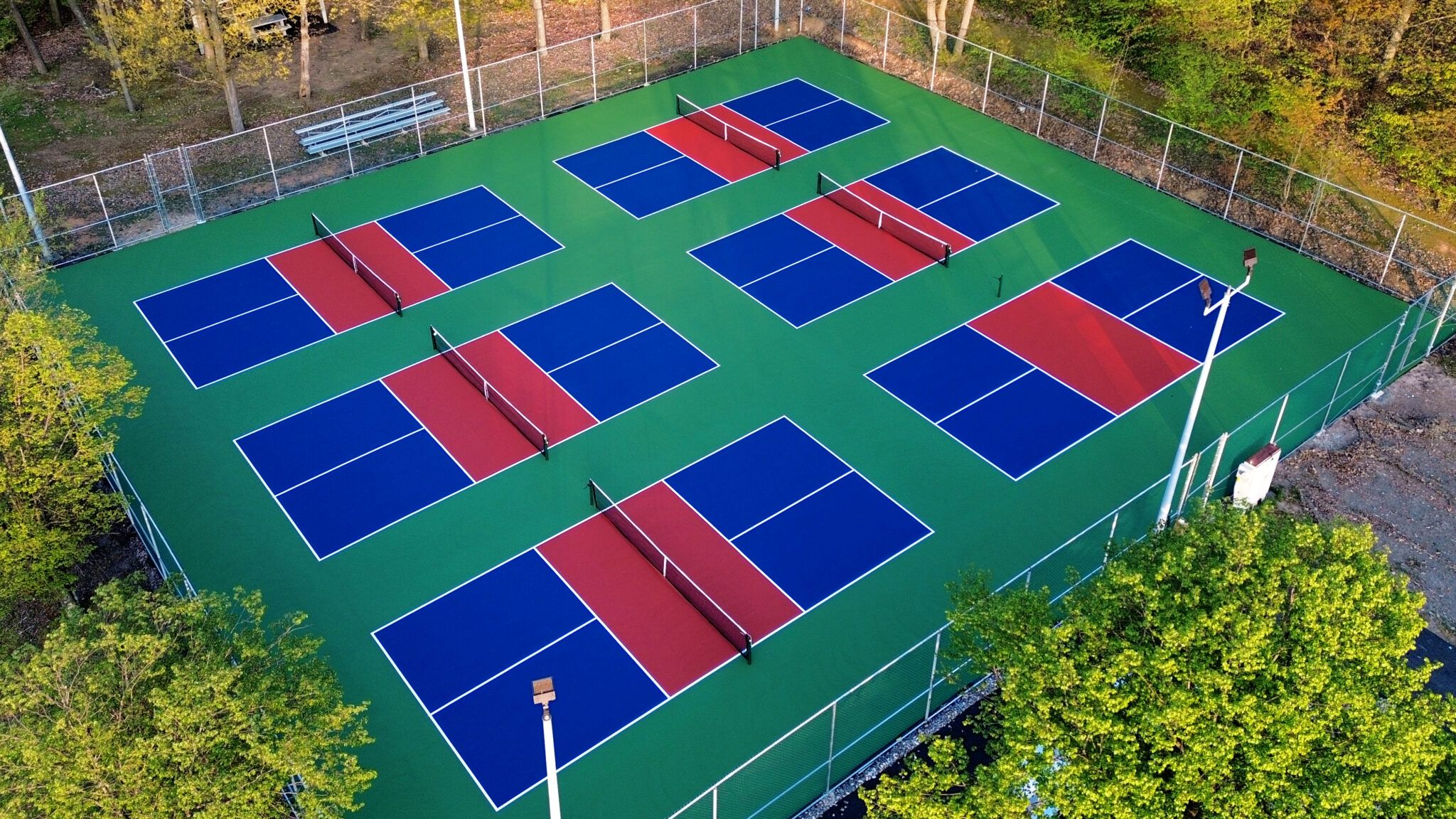Developing a Pickleball Court Construction-- Expert Construction for High Quality Play
Developing a Pickleball Court Construction-- Expert Construction for High Quality Play
Blog Article
Sustainable Practices in Pickleball Court Construction You Need To Know
As the popularity of pickleball continues to rise, so too does the demand for sustainable methods in court construction. The effect of these techniques extends far past the court itself.
Selecting Eco-Friendly Materials
Choosing green materials is an important action in the building and construction of sustainable pickleball courts. The option of lasting products not just decreases ecological influence however likewise improves the long life and efficiency of the court. Trick products include recycled rubber for the surface area, which offers superb toughness and shock absorption while diverting waste from landfills.
In addition, utilizing in your area sourced products reduces transportation emissions and sustains regional economic climates. Pickleball court construction. As an example, using native woods for secure fencing and seats can give a lasting visual while ensuring strength against the aspects.
Including permeable materials for court structures can better add to sustainability by permitting natural water drain and decreasing overflow. These options not just protect regional ecological communities yet also promote healthier play atmospheres.
Reliable Drainage Solutions
While the selection of eco-friendly materials is crucial, executing effective drain solutions is just as vital for maintaining sustainable pickleball courts. Appropriate drainage not just shields the court surface area from water damage however likewise reduces erosion and drainage, promoting environmental honesty.
Reliable drain systems can consist of permeable paving, which enables water to penetrate the ground instead of pooling on the surface. This lowers the likelihood of standing water, which can result in mold and various other maintenance concerns. Additionally, including purposefully put water drainage channels and swales can direct excess water away from the court location, guaranteeing a dry having fun surface area and protecting against soil erosion.
Using native plants in the landscape design around the courts can better boost water drainage by absorbing excess water and lowering runoff. These plants need less irrigation and advertise biodiversity, straightening with lasting techniques.
In addition, it is essential to on a regular basis preserve the water drainage system to ensure its lasting efficiency. This consists of clearing debris and tracking for blockages. By focusing on effective drainage remedies, pickleball court manufacturers can substantially contribute to the sustainability and durability of the facility, inevitably benefiting both gamers and the atmosphere.
Energy-Efficient Lights Options
As the demand for pickleball proceeds to expand, integrating energy-efficient lights alternatives into court layout has come to be increasingly vital for sustainability. Conventional lighting systems commonly take in too much energy, adding to greater functional costs and ecological influence. For that reason, taking on modern-day, energy-efficient technologies is important for both brand-new buildings and improvements.
LED (Light Emitting Diode) lights attracts attention as a leading option as a result of its long life and power financial savings (Pickleball court construction). Contrasted to standard lights, LEDs use around 75% less power and can last as much as 25 times much longer, dramatically reducing upkeep expenses. Moreover, the directional nature of LED illumination decreases light air pollution, making certain that lighting is concentrated on the court instead of bordering areas.

Sustainable Surface Alternatives
Exploring lasting surface options for pickleball courts has gotten traction among gamers and contractors alike. The focus on eco-friendly products not only straightens with the growing environmental awareness yet likewise enhances the performance and toughness of the courts.
One prominent alternative is making use of recycled rubber, which can be sourced from made use of tires. This material gives outstanding shock absorption, lowering the danger of injuries for gamers while promoting sustainability. Additionally, modular tiles made from recycled plastics offer one more viable alternative. These tiles are very easy to replace and mount, and their flexibility permits for numerous court configurations.
Natural grass courts are likewise arising as a lasting choice, advertising biodiversity and reducing the warmth island result. Nevertheless, they need normal maintenance and water, which may not align with all sustainability objectives.

Water Conservation Methods

One more reliable technique includes the installation of rain harvesting systems. These systems collect and save rain for use in preserving court surface areas and landscape design. This approach not only conserves drinkable water but also reduces dependence on metropolitan sources.
Furthermore, utilizing drought-resistant landscaping around the courts is necessary. Native plants require much less water and are better adjusted to regional climate conditions, hence decreasing total water consumption. Furthermore, making use of efficient watering systems, such as drip irrigation, makes certain that water is provided straight to plant roots, reducing dissipation and waste.
Conclusion
Incorporating lasting practices in pickleball court construction dramatically contributes to environmental preservation and source effectiveness. Using environmentally friendly materials, implementing effective drainage options, and embracing energy-efficient illumination alternatives can substantially lower eco-friendly influence. In addition, discovering sustainable surface alternatives and using water preservation strategies enhance the general sustainability of these entertainment centers - Pickleball court construction. By prioritizing these practices, the building and construction of pickleball courts can straighten with wider environmental objectives while advertising longevity and functionality within communities.
As the popularity of pickleball continues to increase, so too does the demand for sustainable practices in court building.Choosing click to investigate eco-friendly materials is an important step in the building of lasting pickleball courts. By focusing on energy-efficient lights choices, pickleball court builders can add to an extra sustainable future while meeting the demands of players and stakeholders alike.Incorporating sustainable surface options not only improves the efficiency of pickleball courts yet also paves the way for applying reliable water preservation methods.Integrating sustainable practices in pickleball court building and construction dramatically contributes to environmental preservation Recommended Reading and source efficiency.
Report this page